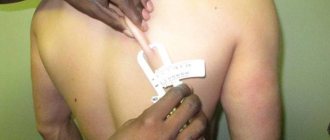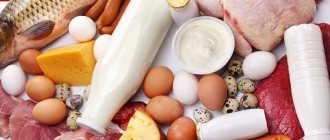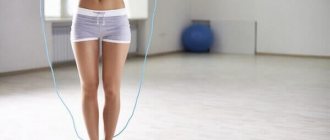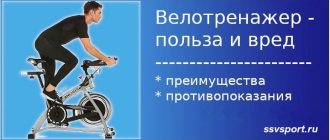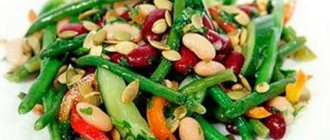Small calorie deficit plus activity
The most important rule in losing weight is fewer calories and more physical activity. Of course, you can lose weight without exercise, but in this case, your chances of losing muscle at the same time increase.
It is impossible to remove fat from one specific area of the body, but you can always reduce the overall percentage of it in the body. It's important to go slowly here because rapid weight loss tends to reduce muscle mass. It is ideal if the weight comes off little by little, even if it takes a year or two.
The ideal cardio workout for those who don't want to lose muscle mass
Nike trainer and founder of The Ocho System Joe Holder knows how to figure out how much cardio you need and how to incorporate it into your routine.
It's not just cardio training. This is hardening!
Conditioning is a unique tool that improves the condition of your cardiovascular system and does this without losing muscle mass. For many of us, cardio means running, working out on the elliptical machine, or doing a strenuous workout on the treadmill. In fact, this is not a completely correct idea. Cardio training develops the aerobic system, but does not allow you to achieve the most effective state. Hardening works much better, developing all our energy systems.
We need beautiful and voluminous muscles paired with a well-developed and healthy cardiovascular system. This can be achieved by combining sprinting with strength training in the gym, practicing tempo training and recovery running.
Basic energy systems
We have three main energy systems: anaerobic alactic, anaerobic lactate and aerobic.
The anaerobic alactic system is responsible for bursts of energy in short periods of time (up to 20 seconds) that increase maximum strength and/or speed.
It does not use oxygen and does not create lactic acid. The system receives the energy it needs by breaking down phosphate compounds - adenosine triphosphate (ATP) and creatine phosphate (CP). In order to develop this system, you need to train for a long time at maximum loads. The anaerobic lactate system provides energy for activities lasting up to one minute. It does not need oxygen and produces energy by breaking down glucose and glycogen. A side effect of a chain of complex reactions is the appearance of lactic acid, which then decomposes to form a salt (lactate). It is lactate that is responsible for the feeling of fatigue in the muscles (the restoration of ATP reserves slows down, the breakdown of glycogen stops).
The aerobic system is responsible for providing the body with energy for longer periods of time by breaking down carbohydrates, amino acids and fatty acids. This process requires oxygen and can result in the production of lactic acid—if the workout is intense enough.
Each of these systems has its own purpose, and depending on your goals, you need to focus on developing the one you need.
The perfect workout
If you want to maximize your muscle mass, train 2-3 times a week.
By doing low-intensity cardio more than three times a week, you're likely to neglect strength training, which maintains your current muscle size and helps you build it further. You may also be avoiding activities that strengthen and strengthen your energy systems in general. But you remember that our goal is to strengthen the aerobic system and at the same time maintain, even increase, muscle mass.
If you do conditioning training 3 times a week, your muscle mass will be maintained. More than four workouts per week will cause muscle size to begin to decrease as the body adapts to what it is being trained for (example: the lean and wiry bodies of long-distance runners). Don't forget about it!
Weekly schedule of proper cardio training
You should do three cardio workouts per week: one develops the anaerobic alactic system, another develops the anaerobic lactate system, and the third is aimed at developing the aerobic energy system.
Holder says sprints are great for the first two workouts. The result will be an increase in your body's recovery rate and your performance during training, as well as muscle energy absorption during strength training.
The third workout is designed to develop the aerobic system (running, swimming, cycling, boxing). It can also be a tempo workout or a recovery run.
Sprint example
Two sets: five runs of 20-40 meters, 2 minutes of rest between them and 4 minutes of rest between sets. The effort you put in during this workout is key. Gradually increase the distance and number of sprints every week of training. If possible, add hill running.
You can also train on a bicycle according to the following scheme: 8-second sprint, 12 seconds recovery. Repeat for 20 minutes.
Example of a tempo running workout
- Three times 800 m.
- Three times 400 m.
- Once - 1,600 m.
This workout can be done both outdoors and indoors on a treadmill. Remember to add 90 seconds of rest after each interval.
Recovery run example
This could be walking briskly on a treadmill at a low incline, jogging, or cycling at a very leisurely pace for 20 to 30 minutes.
You can also add small sprints after a light warm-up before your main strength training session in the gym. For this purpose, 5-second sprints with rest intervals of 30–60 seconds between them are suitable. It is advisable to perform 5 approaches. Then rest for 4 minutes and begin strength training.
Proper nutrition
A high-protein diet is ideal for maintaining muscle mass while losing weight. This is especially important for those over 35 years of age who are losing weight. Most diet plans that work consist of 15-20% protein, 50-60% complex carbohydrates, 25-30% fat.
It is also important to eat foods rich in chromium (tuna, herring, shrimp). A sufficient level of chromium has a positive effect on the feeling of hunger and helps normalize weight.
Pre-workout nutrition
When you feel hungry, you can eat easily digestible, carbohydrate-rich foods. 1.5-2 hours in advance, so as not to feel discomfort and heaviness in the stomach.
Post-workout nutrition
After completing your workout, eat a meal containing protein, slow-digesting carbohydrates, and healthy fats within 45 minutes.
The best proteins for gaining muscle mass:
- any lean meat;
- low-fat dairy products;
- eggs;
- fatty fish;
- seafood;
- protein shakes.
Carbohydrates promote muscle recovery and replenish glycogen reserves. Suitable:
- fruits (especially bananas);
- oatmeal;
- whole grain pasta;
- diet bread;
- Brown rice;
- dark chocolate.
Healthy oils actively replenish energy in the body:
- avocado;
- olive;
- nutty;
- flaxseed and any unrefined oils.
How to lose weight from fat - simple but effective tips
Lose weight quickly by 10 kg in a week!
Let's say you want to quickly lose weight and get rid of excess weight. Having listened to the “experts”, you increase the number of repetitions in the exercise from 5-9 to 12-15, sharply reduce your calorie intake, while significantly increasing your cardio load in the hope of losing fat faster.
As a result of such actions, the body simply goes into shock, not receiving enough energy from food, but at the same time feeling a sharply increased need for it, and the body begins to use the simplest source of nutrition - its own muscles.
Conditions for muscle growth
To begin with, muscle growth is associated with a constant increase in load - the body prepares to lift increasingly greater weights, the number and volume of muscle fibers increases, and muscle tissue learns to effectively store nutrients in the form of glycogen.
As soon as the load decreases, the body understands that it does not need excess muscle tissue. The reason is simple - every kilogram of muscle requires additional energy, even in a calm state (about 50-100 kcal per day per kg of muscle).
Burn muscle and gain fat?
The easiest way for the body to use its own muscle tissue for energy. Considering that the strength load usually decreases with improper weight loss, the body receives clear instructions that it does not need muscles.
In addition, while in a state of shock, the body can store fat even with a negative caloric intake. Not to mention the fact that the production of the stress hormone cortisol, which inhibits fat burning, sharply increases.
I don't know how to lose weight?
One thing to remember once and for all is that too many repetitions or reps are bad for your muscles. Strength training with increased repetitions does not burn fat, it only burns the muscle itself.
In no case should you reduce your daily calorie intake by more than 20%, or sharply increase your level of cardio training. The more furiously you rush to fight fat, the worse the result will be.
How many calories do you need to lose weight?
To begin with, a safe fat loss for the body is 400-700 g per week, which is equivalent to a deficit of 3600-6300 kcal (or 500-900 kcal per day). This is where the recommendation of a low-carbohydrate keto diet for weight loss comes from or reducing daily calories by 20%.
In addition, even with such a “gentle” diet, the body will burn 1 kg of muscle for every 3 kg of fat. But remember that in cases of fasting and exhausting exercise, you can lose up to 3 kg of muscle for every kilogram of fat.
Strength exercises to lose weight
The main purpose of strength training when burning fat is to maintain existing muscle levels. It is important to reduce the load as little as possible and train at full strength - this is the only way to avoid losing muscle.
You need to comply with all the requirements of proper nutrition when training - you can reduce the calorie content of your regular meals, but in no case do not reduce the calorie content of these meals. You can only reduce the amount of carbohydrates a little.
Cardio exercise and diet
Theoretically, if you maintain an adequate level of strength training and reduce your total caloric intake by 20%, you will already lose weight. If you eat right when training, the loss will be mainly due to fat.
Around week 3, you can start doing additional cardio. 3-4 times a week, in the morning on an empty stomach, or 3 hours after meals, train for 45-60 minutes with a heart rate in the zone of 130-150 beats per minute. Follow this recommendation strictly.
***
If you want to lose weight, you need to act progressively - first cut calories, then add cardio. But do not forget to load the muscles enough to avoid losing them.
Preserving muscles with training
Exercise is an important aspect of maintaining muscle mass in a calorie-restricted diet. The important thing here is the balance between diet, duration and severity of training. Each body is individual, so it is impossible to accurately predict the amount of effort required to normalize weight. It is worth listening to your body in order to adjust the intensity of your training or diet in time.
The most successful ways to reduce fat while maintaining muscle are:
- Moderate to vigorous cardio, lasting more than an hour and a half PER WEEK . You can choose running, cycling, or any outdoor games.
- Strength training focusing on major muscle groups. Basic exercises that involve 2 or more muscle groups are especially effective. It is important not to overdo it and gradually increase the load and repetitions.
Increasing the intensity of your workouts activates fat burning. Effective strength building is only possible through maximum muscle tension. To balance and restore muscle fibers, alternating periods of rest and exercise is beneficial.
Causes of muscle loss when losing weight
Before you begin the process of losing weight, it is important to understand what factors and why, together with fat, destroy muscle fibers.
The first and most important mistake is restricting food, following a strict diet and significantly reducing calories. This leads to a lack of energy, weakness and apathy. To maintain energy balance and vital functions, the body begins to process fat. However, quite often protein, a component of muscles, is used as an alternative source of energy. This leads to loss of muscle mass, decreased physical strength and endurance.
Another reason for muscle loss during weight loss is intense cardio training with limited strength loads. Cardio keeps the body in good shape, improves the functioning of the heart and respiratory system, accelerates the fat burning process, but also negatively affects the condition of the muscles. In order to avoid such a serious mistake, consult with a coach who will draw up a competent program and help you achieve your goal with minimal losses.

